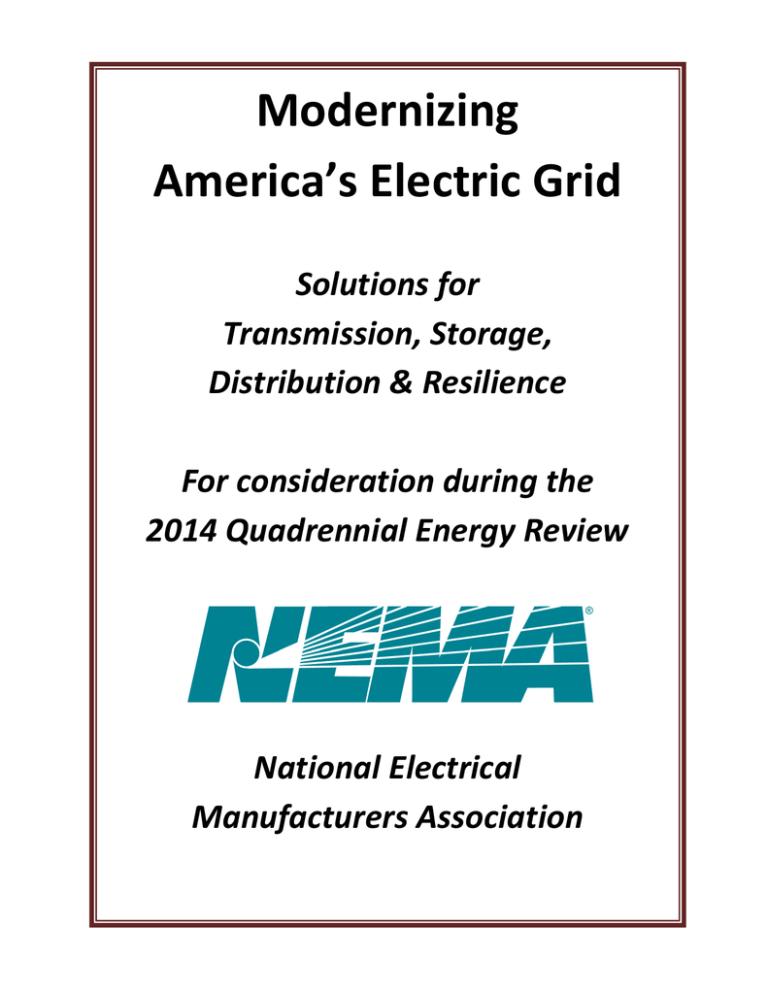Modernizing America’s Electric Grid: A Path to Sustainability and Efficiency
With open minds, we venture into the thought-stimulating topic of Modernizing America’s Electric Grid: A Path to Sustainability and Efficiency. Let’s unravel key details and provide the readers with innovative ideas.
Video about Modernizing America’s Electric Grid: A Path to Sustainability and Efficiency
Modernizing America’s Electric Grid: A Path to Sustainability and Efficiency

The world is shifting towards a more sustainable and efficient energy future, and America’s electric grid is no exception. As the country’s energy landscape evolves, there is an increasing need to modernize the electric grid to ensure it can meet the demands of the 21st century. This article explores the current state of the grid, the challenges it faces, and the opportunities that modernization presents.
The Current State of the Grid
The United States’ electric grid is an aging infrastructure that has been in use for over a century. It is comprised of over 200,000 miles of high-voltage transmission lines and millions of miles of lower-voltage distribution lines. The grid is managed by a complex web of utilities, federal agencies, and state regulatory commissions. Despite its importance, the grid is facing numerous challenges that affect its ability to provide reliable and efficient energy distribution.
Challenges Facing the Grid
One of the primary challenges facing the grid is its age. Much of the infrastructure is in need of replacement or upgrading, as many of the transmission and distribution lines were installed in the early 20th century. This aging infrastructure can lead to issues such as power outages, equipment failures, and inefficiencies. Additionally, the grid is not designed to handle the increasing demand for renewable energy sources, such as solar and wind power.
Another challenge facing the grid is its vulnerability to cyberattacks. As the grid becomes increasingly reliant on smart technologies and interconnected systems, the risk of cyber threats grows. A cyberattack on the grid could have devastating consequences, including extended power outages and economic losses.
Climate change also poses a significant threat to the grid. As temperatures rise, the demand for electricity to power air conditioning and other cooling systems increases. This can lead to strain on the grid, particularly during peak demand periods. Additionally, extreme weather events such as hurricanes and wildfires can damage grid infrastructure and cause power outages.
Opportunities of Grid Modernization
Despite these challenges, the modernization of the electric grid presents numerous opportunities for improvement. One of the most significant benefits is increased efficiency. Advanced technologies, such as smart grid systems and advanced meters, can optimize energy distribution and reduce energy waste. This can lead to cost savings for consumers and utilities alike.
Another opportunity presented by grid modernization is the increased integration of renewable energy sources. As renewable energy technologies become more efficient and cost-effective, the grid can be designed to accommodate these new sources. This can lead to a reduction in greenhouse gas emissions and a more sustainable energy future.
Grid modernization also presents opportunities for improved reliability and resilience. Advanced technologies can detect and respond to issues on the grid more quickly, reducing the risk of power outages and equipment failures. Additionally, the use of distributed energy resources, such as energy storage systems, can provide backup power during outages and grid failures.
Key Technologies in Grid Modernization
Several key technologies are driving the modernization of the electric grid, including:
- Advanced Smart Grid Systems: These systems use advanced sensors and networking technologies to optimize energy distribution and consumption.
- Energy Storage Systems: These systems use batteries and other technologies to store excess energy for later use, reducing peak demand and improving grid resilience.
- Electric Vehicles: As electric vehicles become increasingly popular, they can also serve as energy storage devices, providing backup power during outages.
- Renewable Energy Sources: Wind and solar power are becoming increasingly cost-effective and are being integrated into the grid at an increasing rate.
- Distributed Energy Resources: These resources, including energy storage systems and microgrids, provide backup power during outages and grid failures.
Implementation and Regulation
The implementation of grid modernization requires a coordinated effort from utilities, regulatory bodies, and government agencies. State and federal agencies must work together to create policies and regulations that support the adoption of advanced technologies and renewable energy sources.
The Federal Energy Regulatory Commission (FERC) has been instrumental in supporting the development of smart grid technologies and the integration of renewable energy sources into the grid. Additionally, state regulatory commissions have implemented policies and incentives to support the adoption of advanced technologies and renewable energy sources.
Utilities are also playing a key role in the modernization of the grid, investing in advanced technologies and infrastructure upgrades. However, utility investment in grid modernization is often limited by regulatory constraints and uncertainty.
Public-Private Partnerships
Public-private partnerships (P3s) are becoming increasingly popular in the development and implementation of grid modernization projects. P3s allow utilities and government agencies to partner with private companies to finance and develop grid modernization projects. This can provide access to funding and expertise that would not be available through traditional public financing models.
Challenges and Concerns
Despite the opportunities and benefits of grid modernization, several challenges and concerns remain. One of the primary concerns is the cost of modernization, which can be significant. Additionally, there are concerns about the impact of advanced technologies on the workforce and the potential for job losses.
Cybersecurity is also a significant concern, as the use of advanced technologies and interconnected systems increases the risk of cyber threats. Utilities and government agencies must work together to ensure that the grid is secure and resilient in the face of these threats.
Closure
We hope this article has been enlightening about Modernizing America’s Electric Grid: A Path to Sustainability and Efficiency. We are grateful for your attention. Until the next article!.